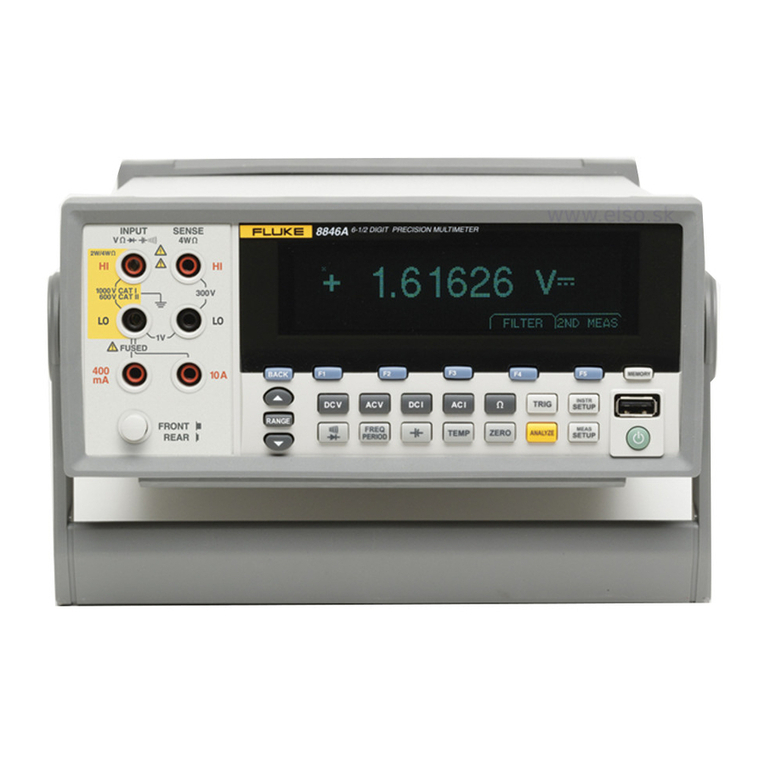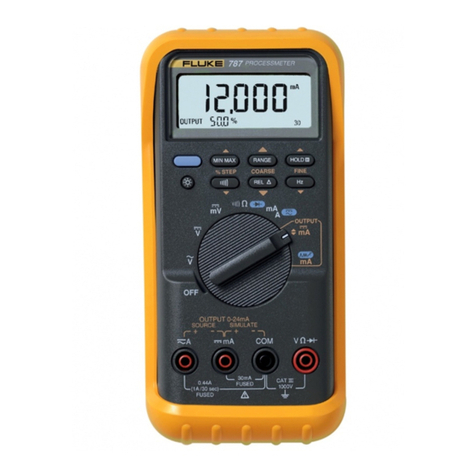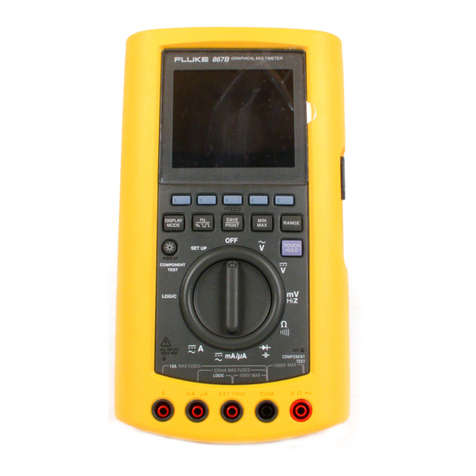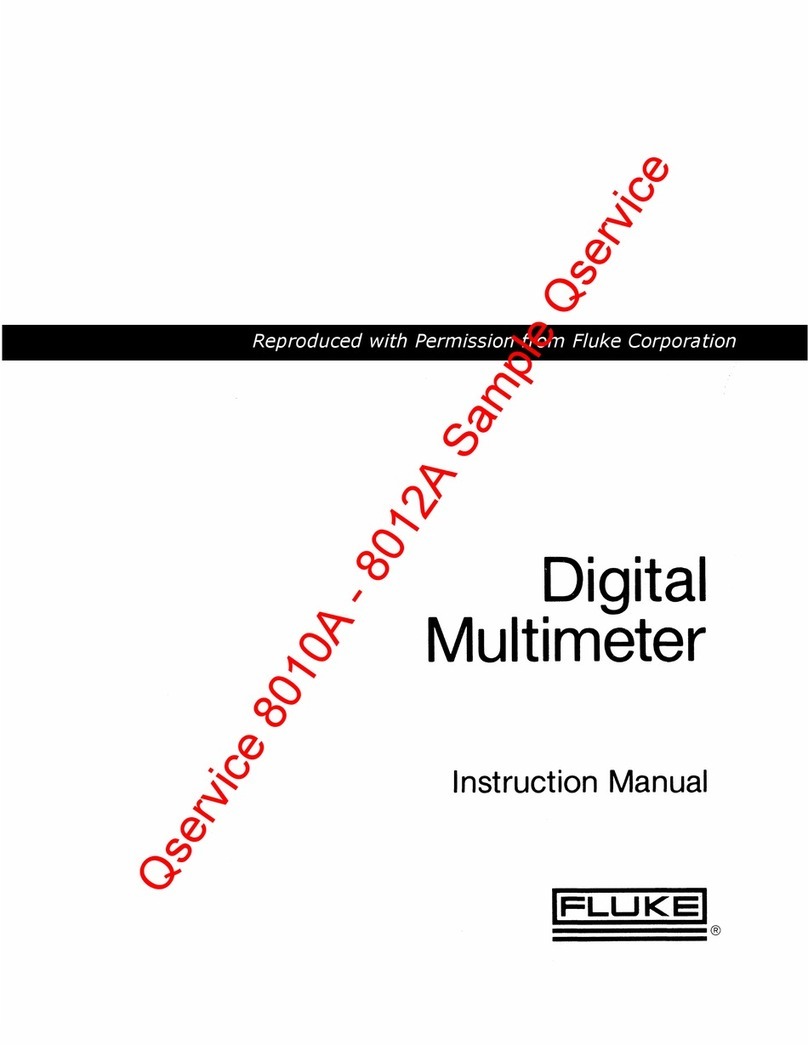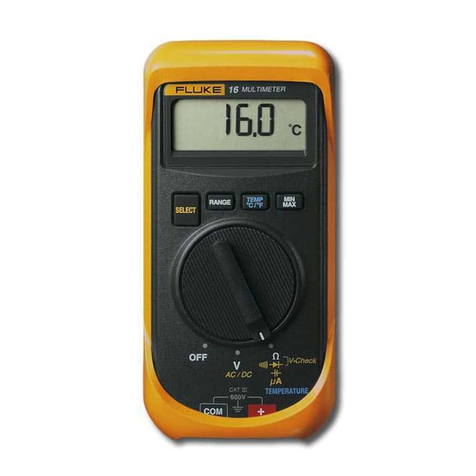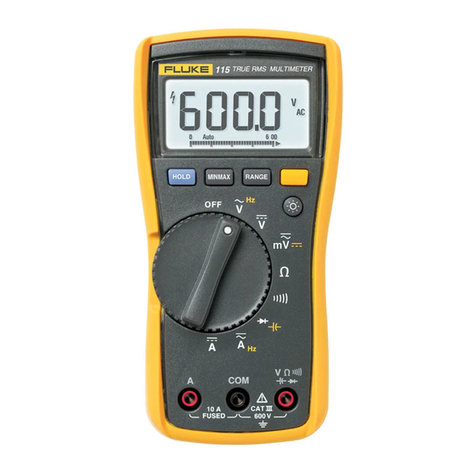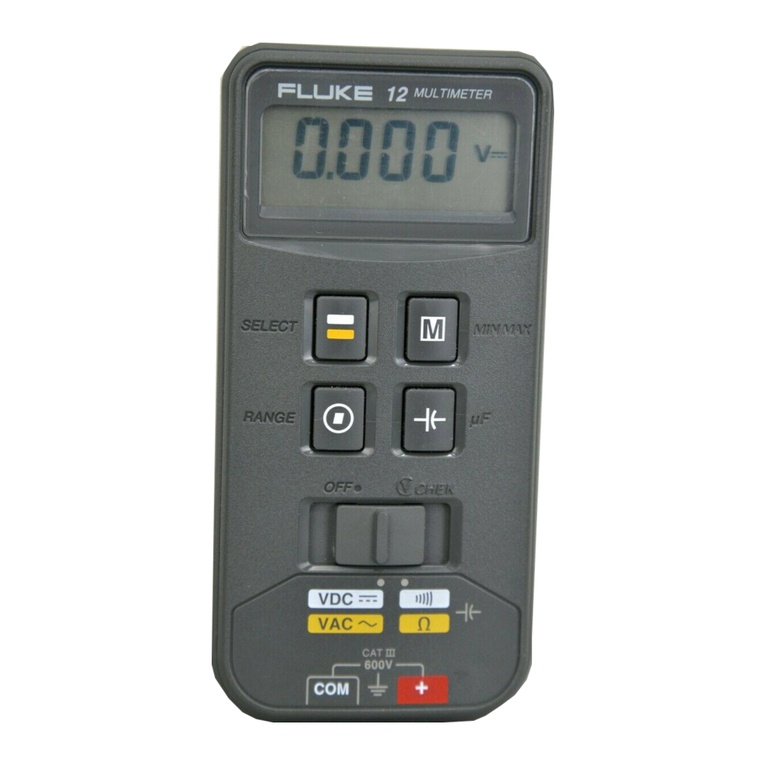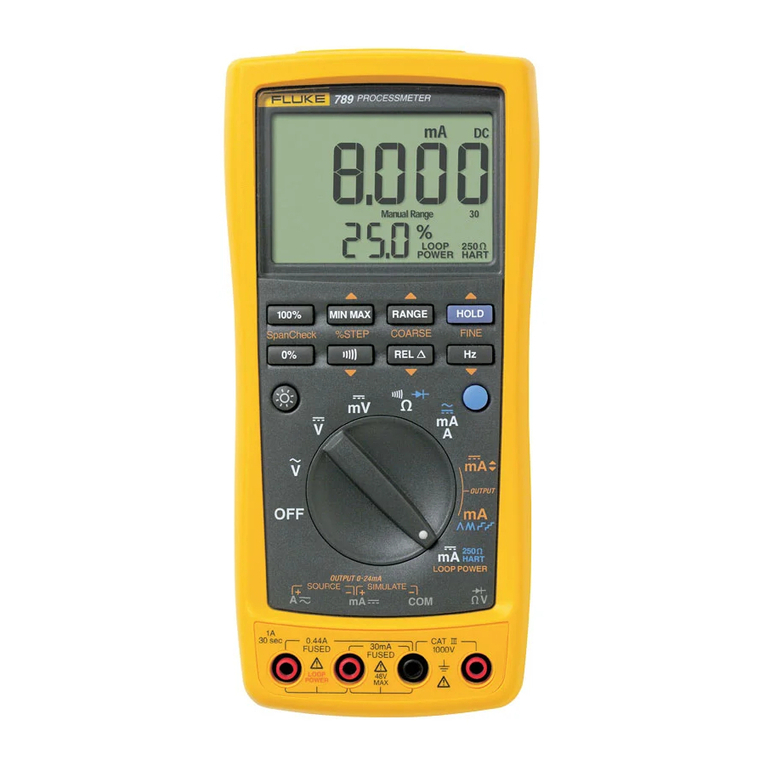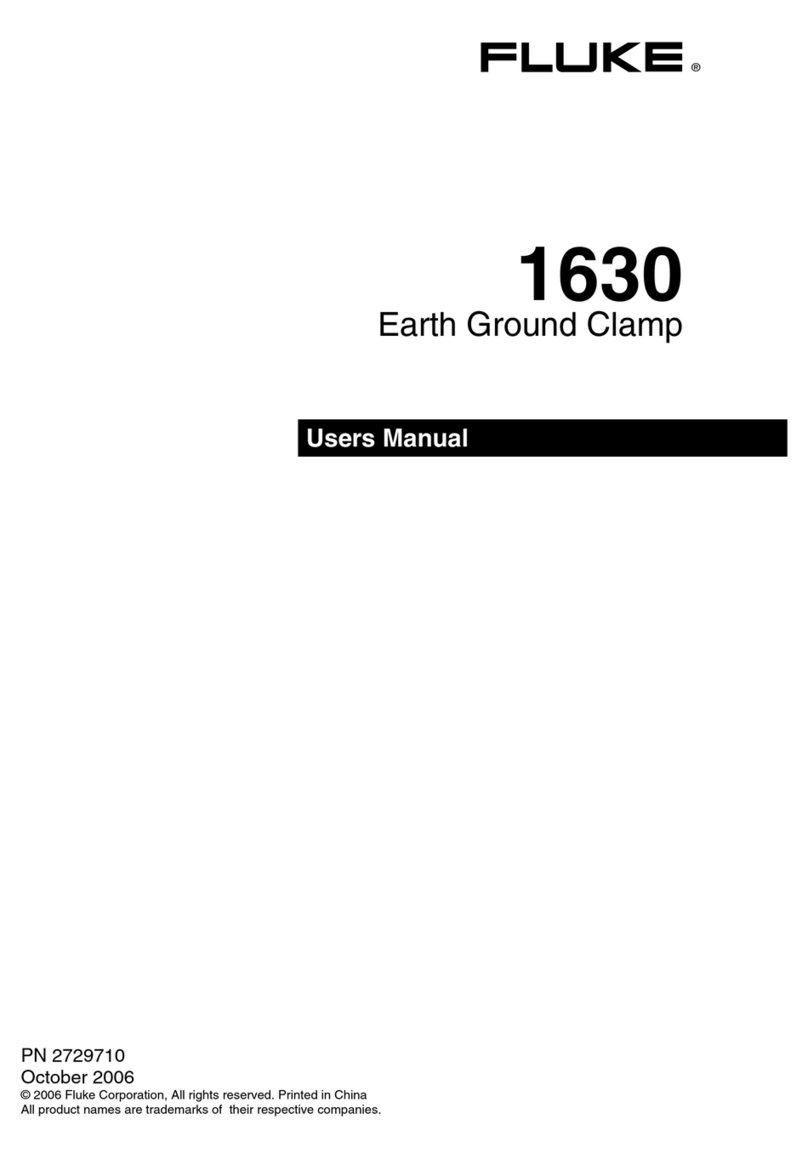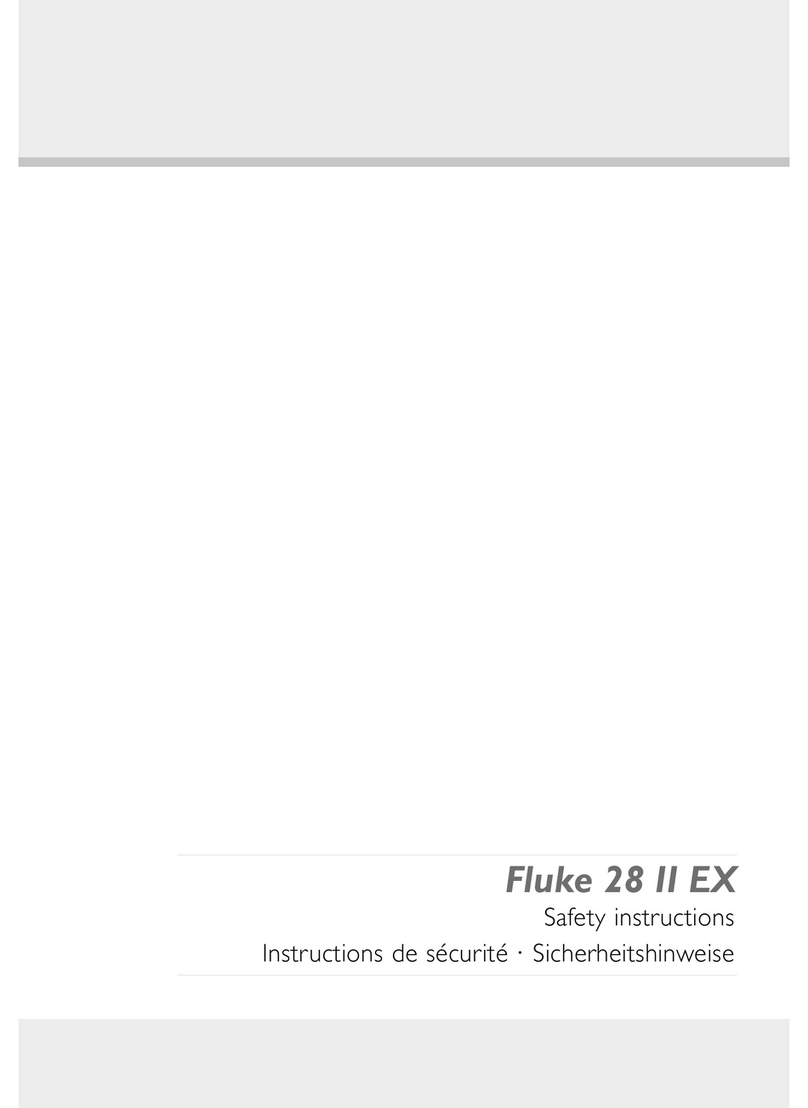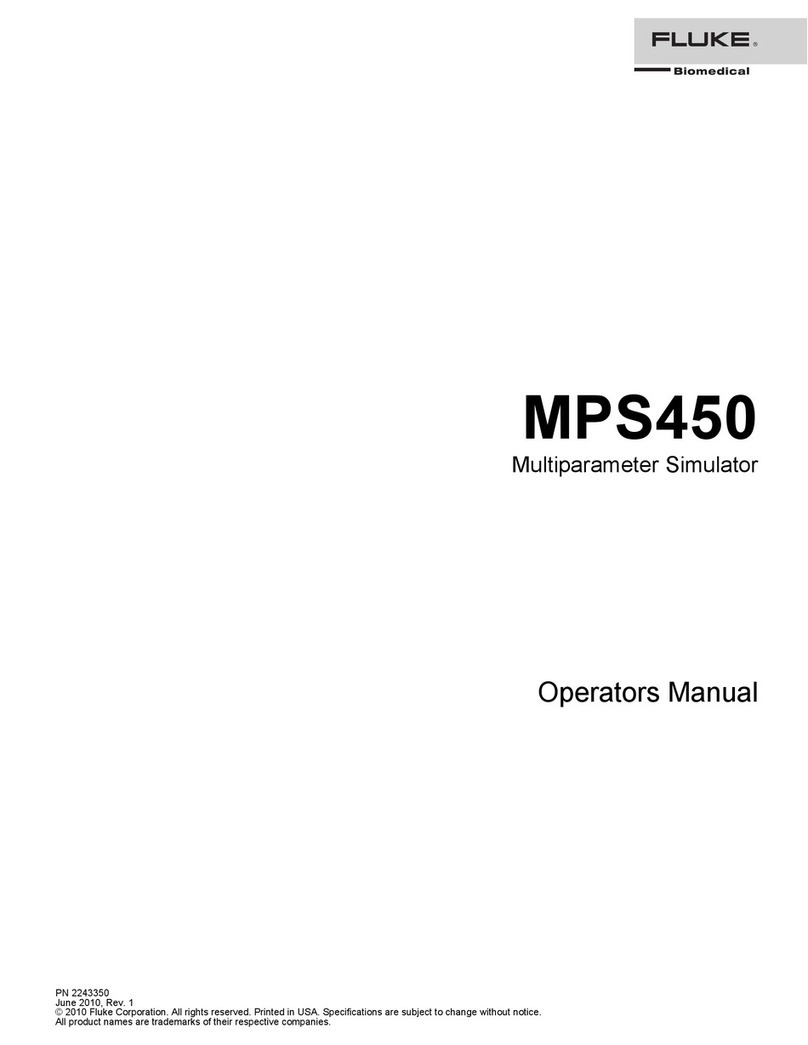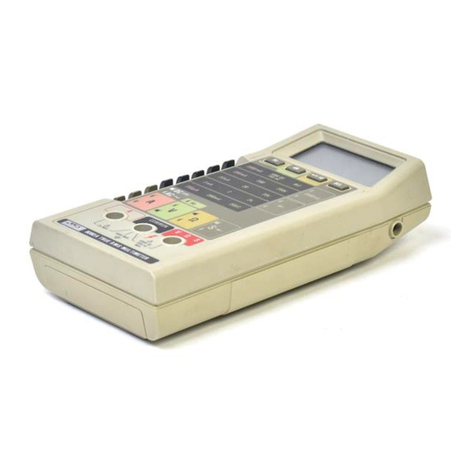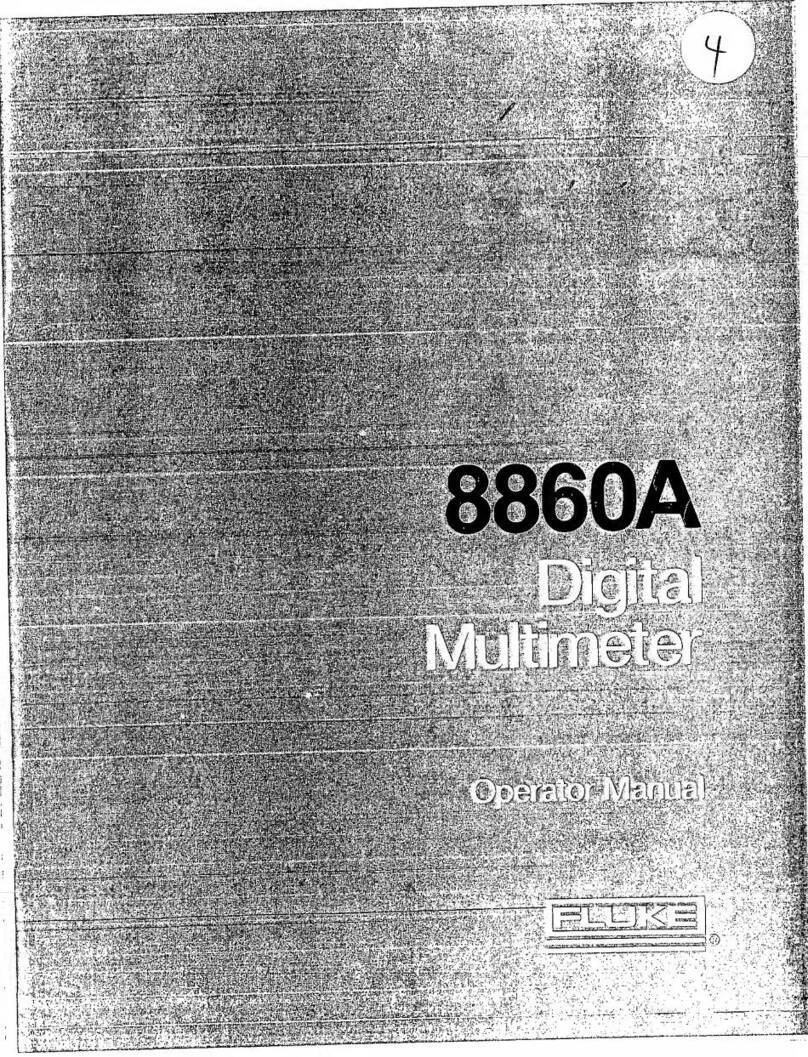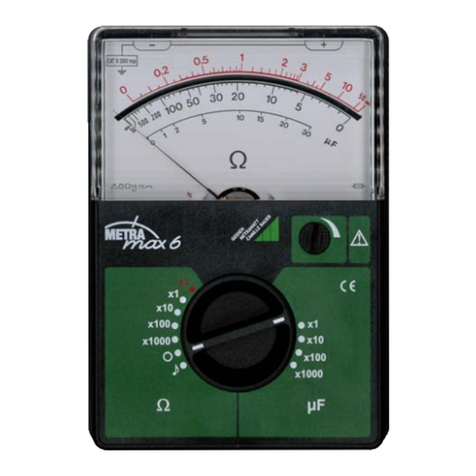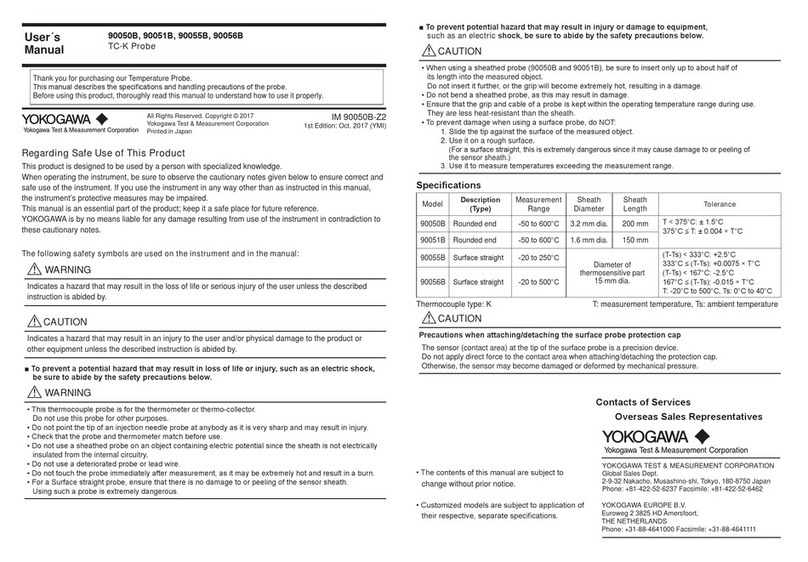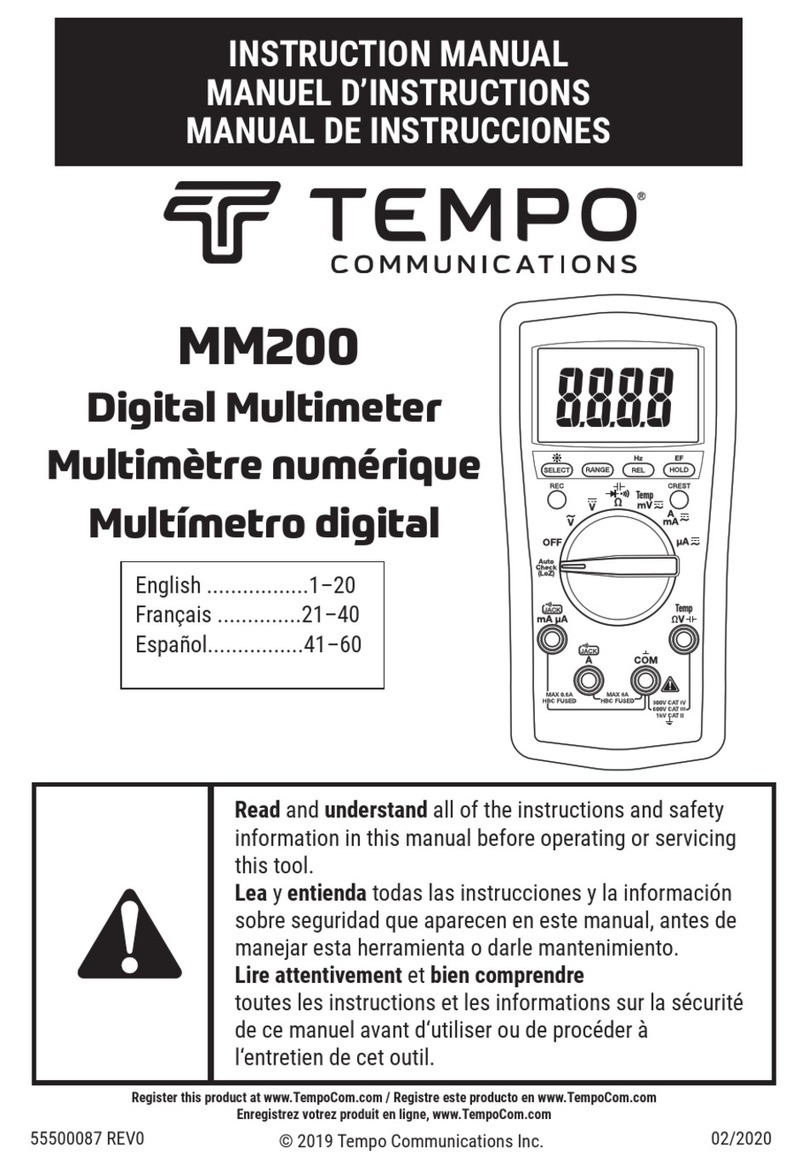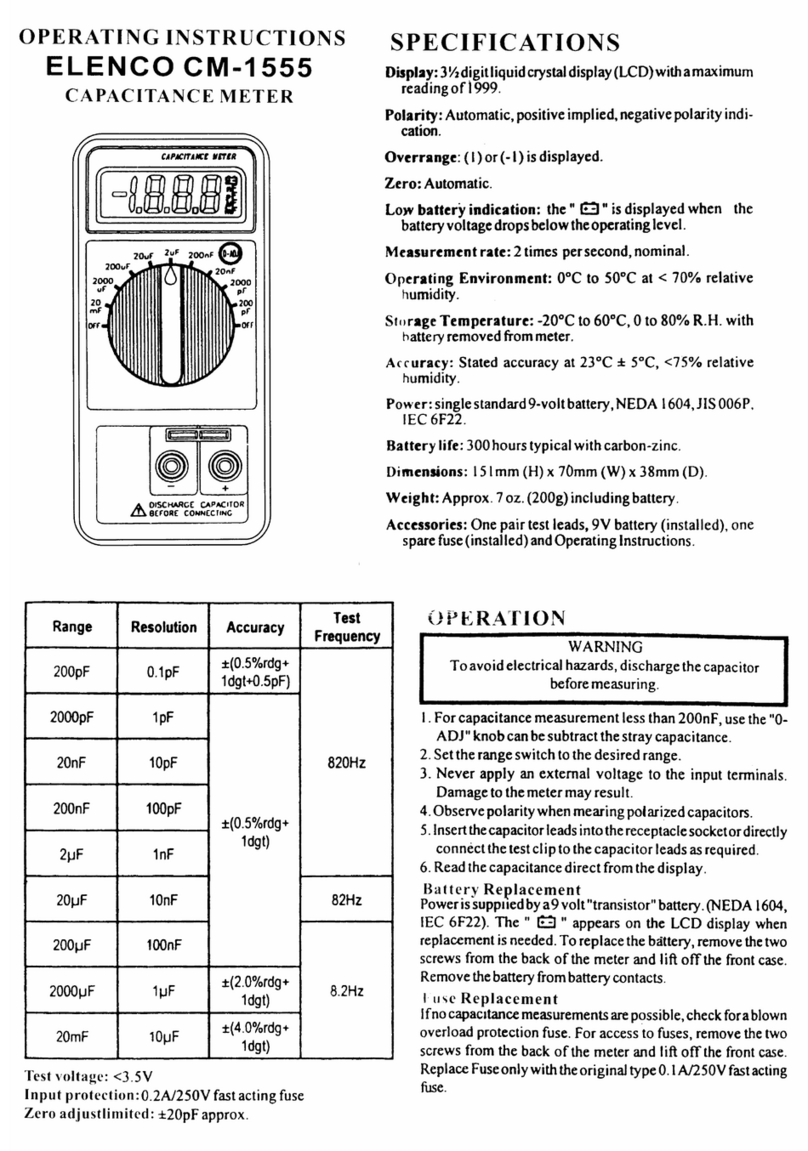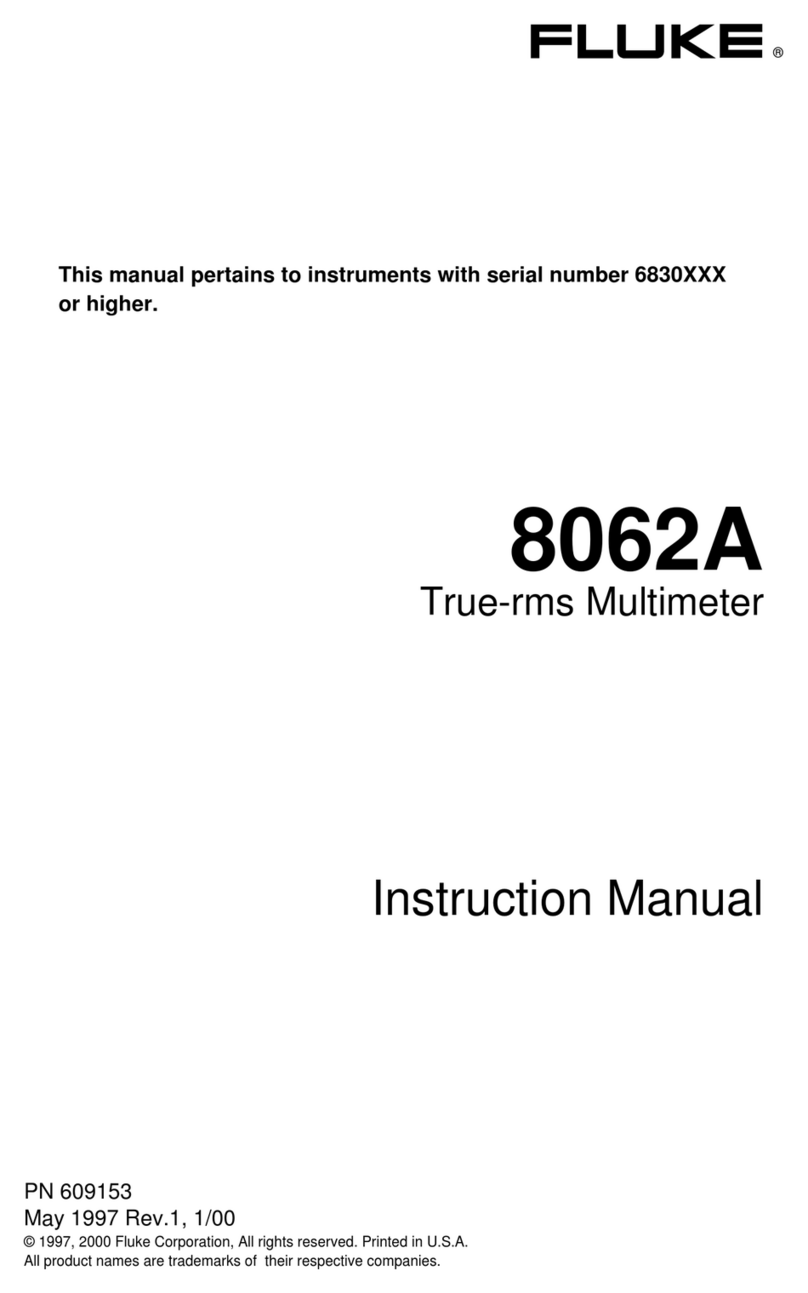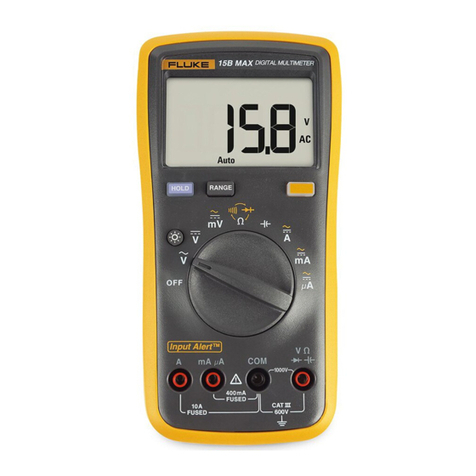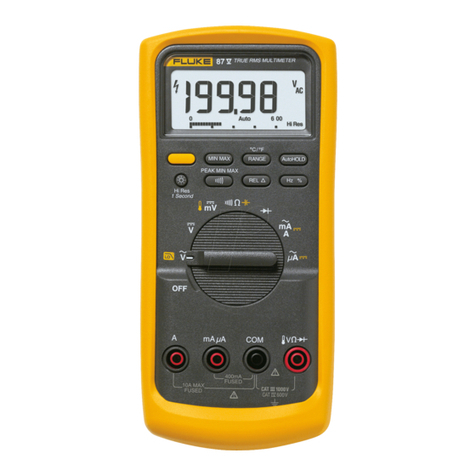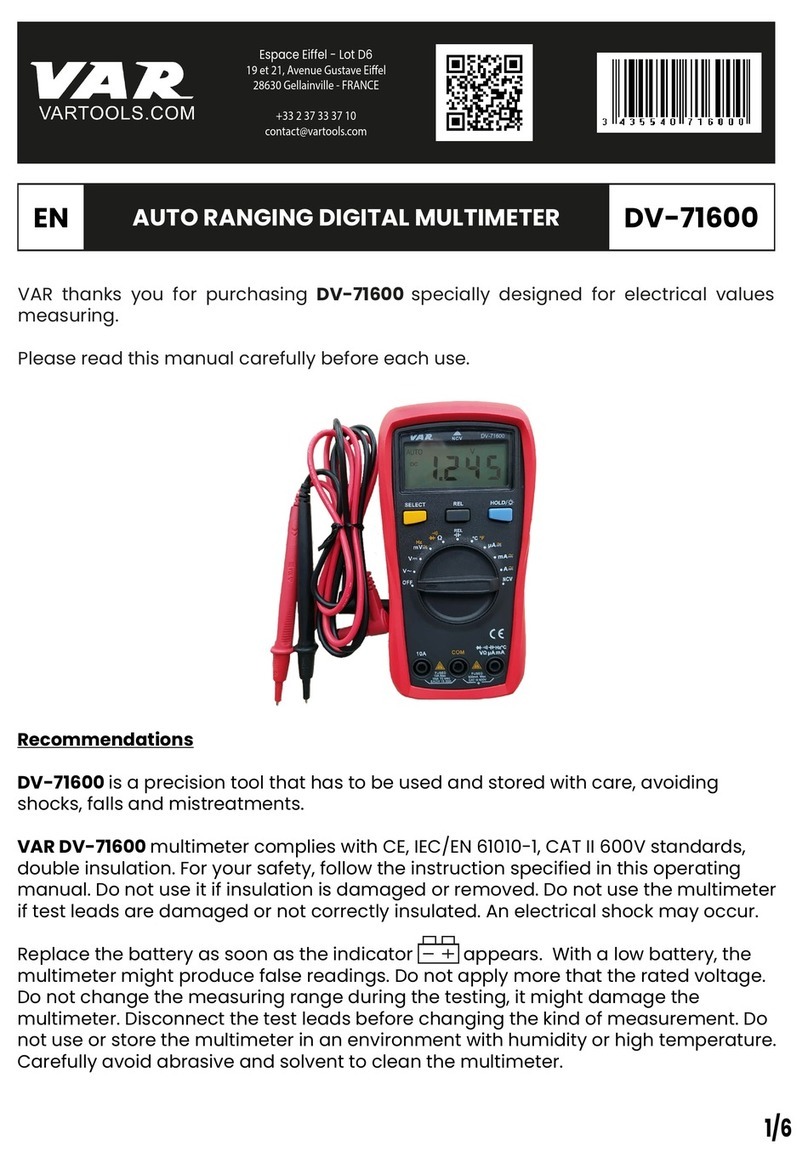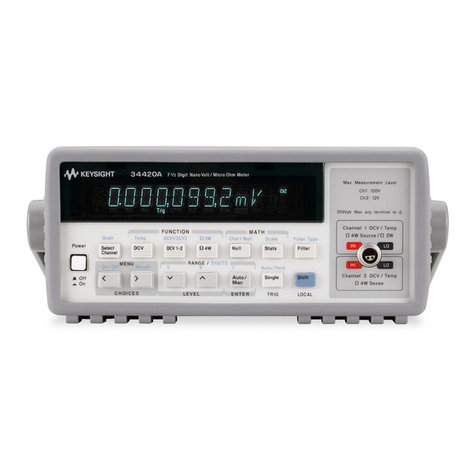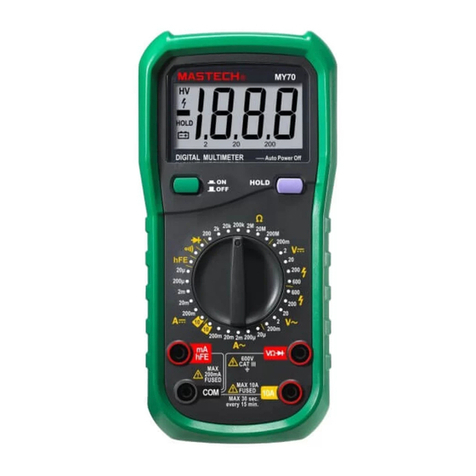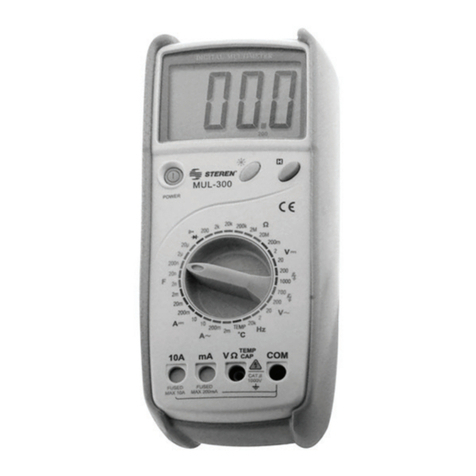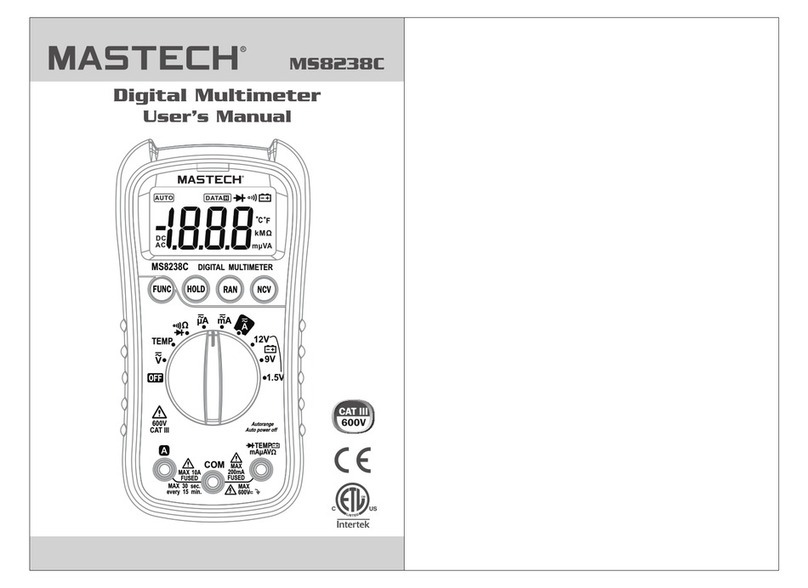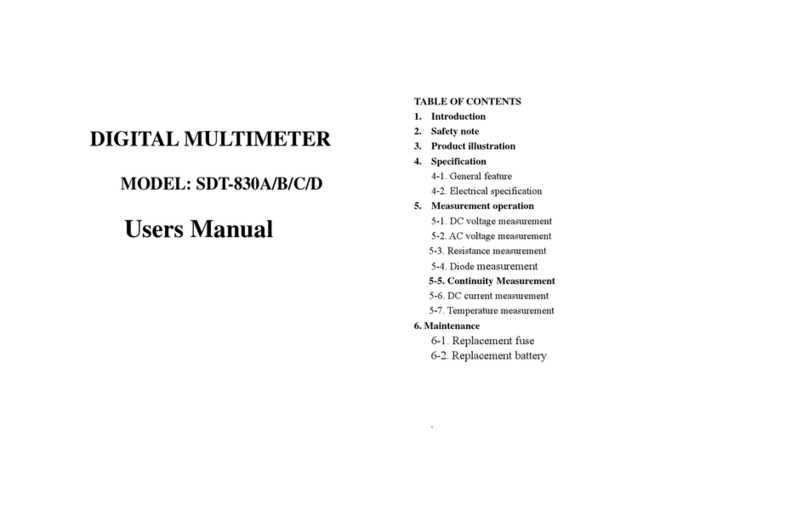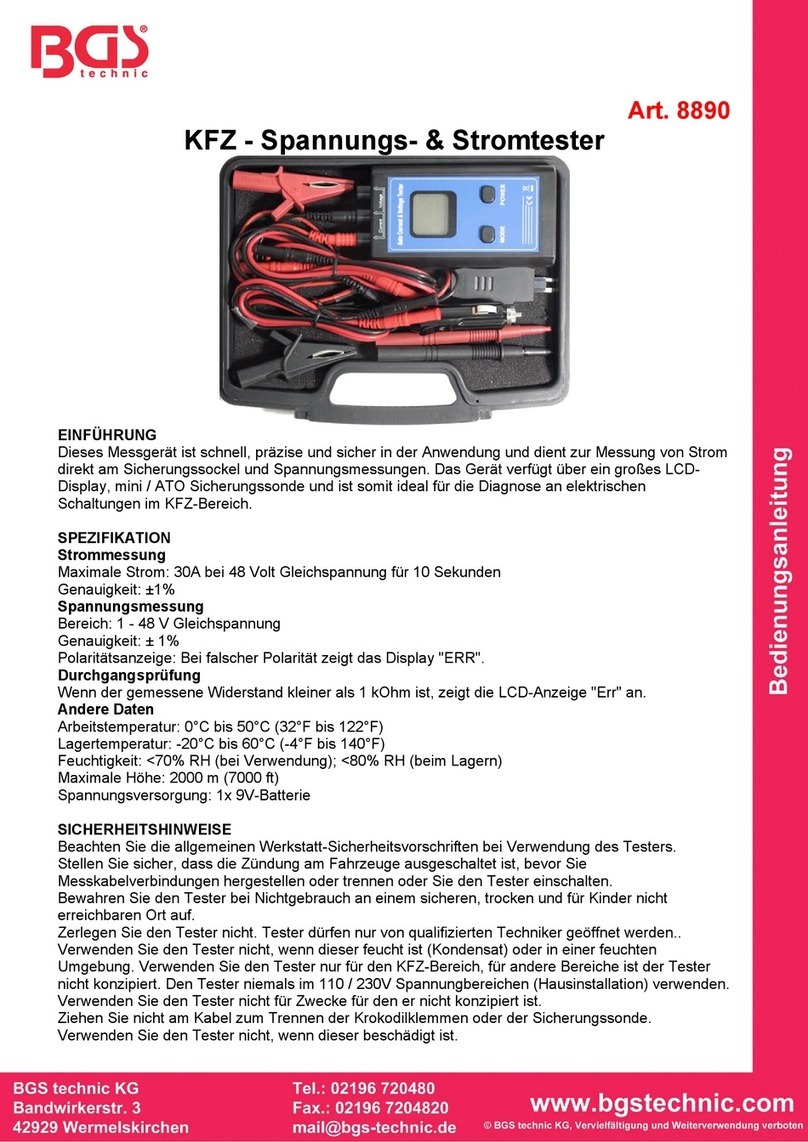
Digital Multimeters
General Specifications
5
General Specifications
Maximum voltage between any
terminal and earth ground ........................................... 1000 V rms
WFuse for mA inputs .................................................. 440 mA, 1000 V FAST Fuse
WFuse for A inputs ..................................................... 11 A, 1000 V FAST Fuse
Display
Digital.......................................................................... 6000 counts, updates 4/sec (Model 28 II also has 19,999 counts
in high-resolution mode).
Bargraph..................................................................... 33 segments; updates 40/sec
Altitude
Operating.................................................................... 2,000 meters
Storage ....................................................................... 10,000 meters
Temperature
Operating.................................................................... -15 °C to +55 °C, to -40 °C for 20 minutes when taken from 20 °C
Storage ....................................................................... -55 °C to +85 °C (without battery)
-55 °C to +60 °C (with battery)
Temperature coefficient
28 II............................................................................. 0.05 X (specified accuracy) / °C (< 18 °C or > 28 °C)
27 II............................................................................. 0.1 X (specified accuracy) / °C (< 18 °C or > 28 °C)
Electromagnetic Compatibility (EN 61326-1:1997) .... In an RF field of 3 V/M, accuracy = specified accuracy +20
counts, except 600 μA dc range total accuracy = specified
accuracy +60 counts. Temperature not specified
Relative Humidity.......................................................... 0 % to 95 % (0 °C to 35 °C)
0 % to 70 % (35 °C to 55 °C)
Battery Type .................................................................. 3 AA Alkaline batteries, NEDA 15A IEC LR6
Battery Life .................................................................... 800 hrs typical without backlight (Alkaline)
Vibration ........................................................................ Per MIL-PRF-28800 for a Class 2 instrument
Shock ............................................................................. 1 Meter drop per IEC 61010 (3 Meter drop with holster)
Size (H x W x L) ............................................................. 1.80 in x 3.95 in x 8.40 in (4.57 cm x 10.0 cm x 21.33 cm)
Size with Holster ........................................................... 2.50 in x 3.95 in x 7.80 in (6.35 cm x 10.0 cm x 19.81 cm)
Weight ............................................................................ 1.14 lb (517.1 g)
Weight with Holster and Flex-Stand............................ 1.54 lb (698.5 g)
Safety Compliance........................................................ Complies with ANSI/ISA S82.01-2004, CAN/CSA C22.2 61010-1-
04 to 600 V Measurement Category IV. Licensed by TÜV to
EN61010-1
Certifications ................................................................. CSA, TÜV, P, ;(N10140), GOST
IP Rating ........................................................................ 67 (Protected against dust and the effect of immersion between
15 cm and 1 m for 30 min)
Detailed Specifications
For all detailed specifications:
Accuracy is specified for 2 years after calibration, at operating temperatures of 18 °C to 28 °C, with relative humidity at 0
% to 95 %. Accuracy specifications take the form of ±([% of Reading] + [Number of least-significant digits]). For Model
28 II in the 4 ½-digit mode, multiply the number of least-significant digits (counts) by 10.
27 II AC Voltage
Accuracy [2]
Range Resolution
40 Hz – 2 kHz 2 kHz – 10 kHz 10 kHz – 30 kHz
600.0 mV 0.1 mV
6.000 V 0.001 V
60.00 V 0.01 V
±(4 % + 10)
600.0 V 0.1 V
±(0.5 % + 3) ±(2 % + 3)
±(4 % + 10) [1]
1000 V 1 V ±(1.0 % + 3) ±(3 % + 3) Unspecified
[1] Specified to a maximum of 300 V ac
[2] Below 5 % of range, temperature coefficient is 0.15 X (specified accuracy)/ °C (>40 °C).
